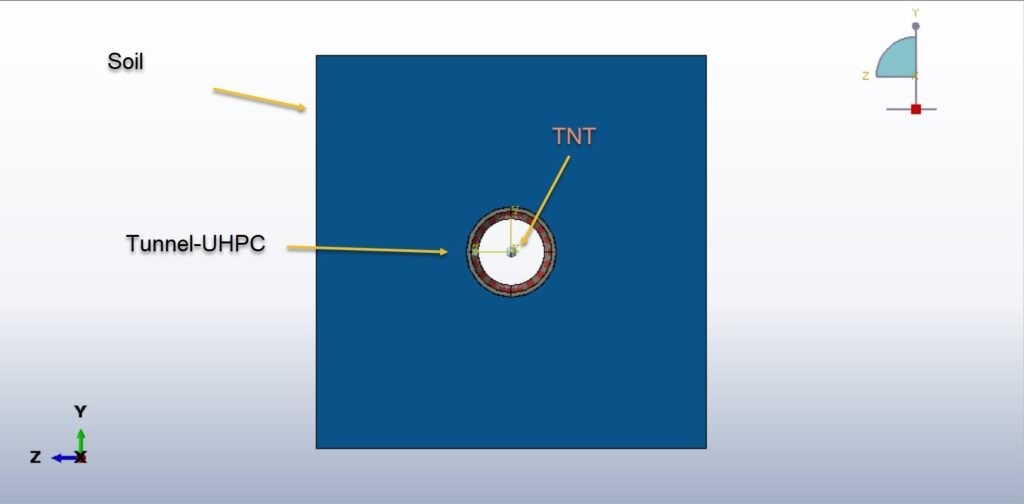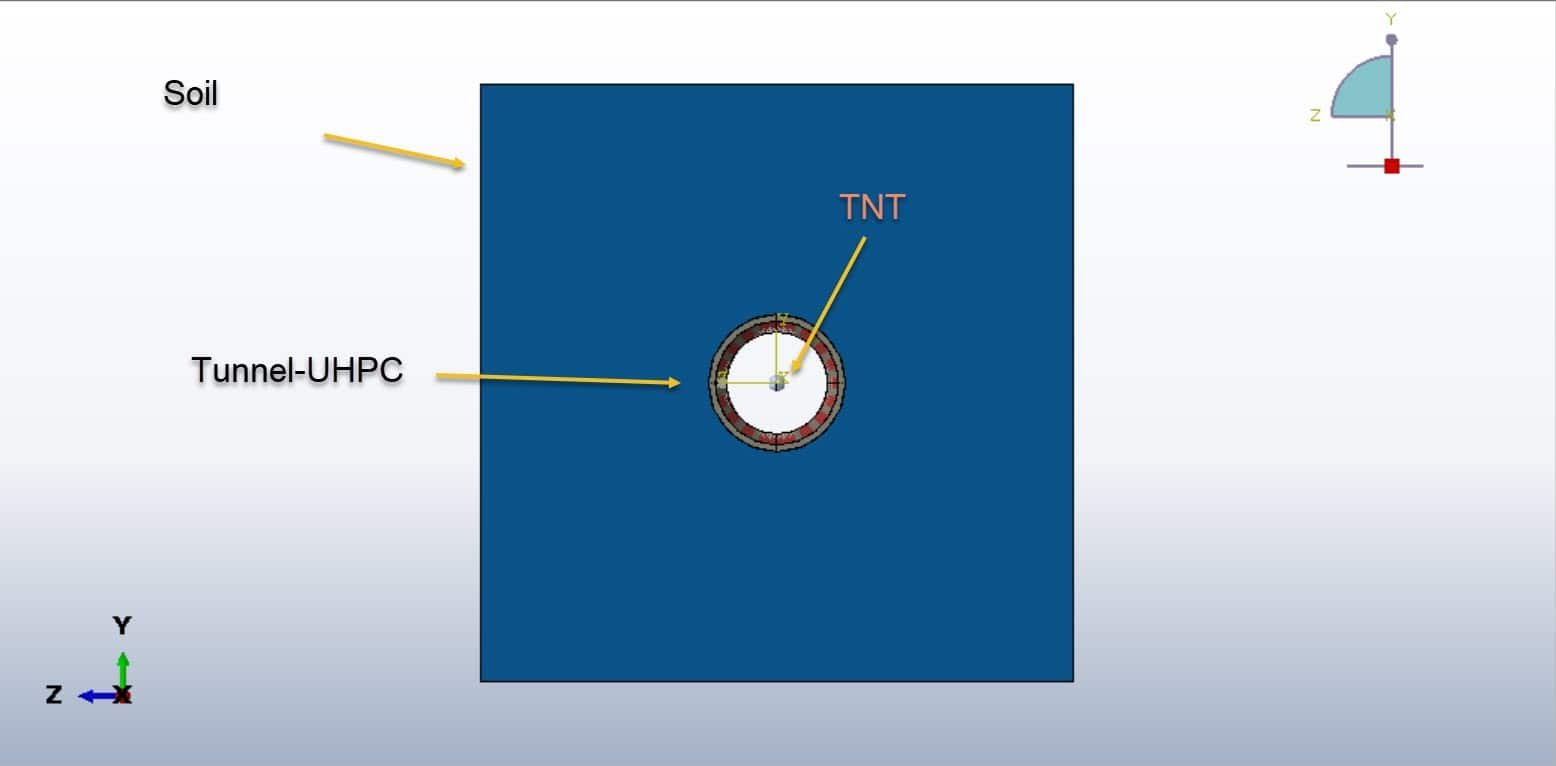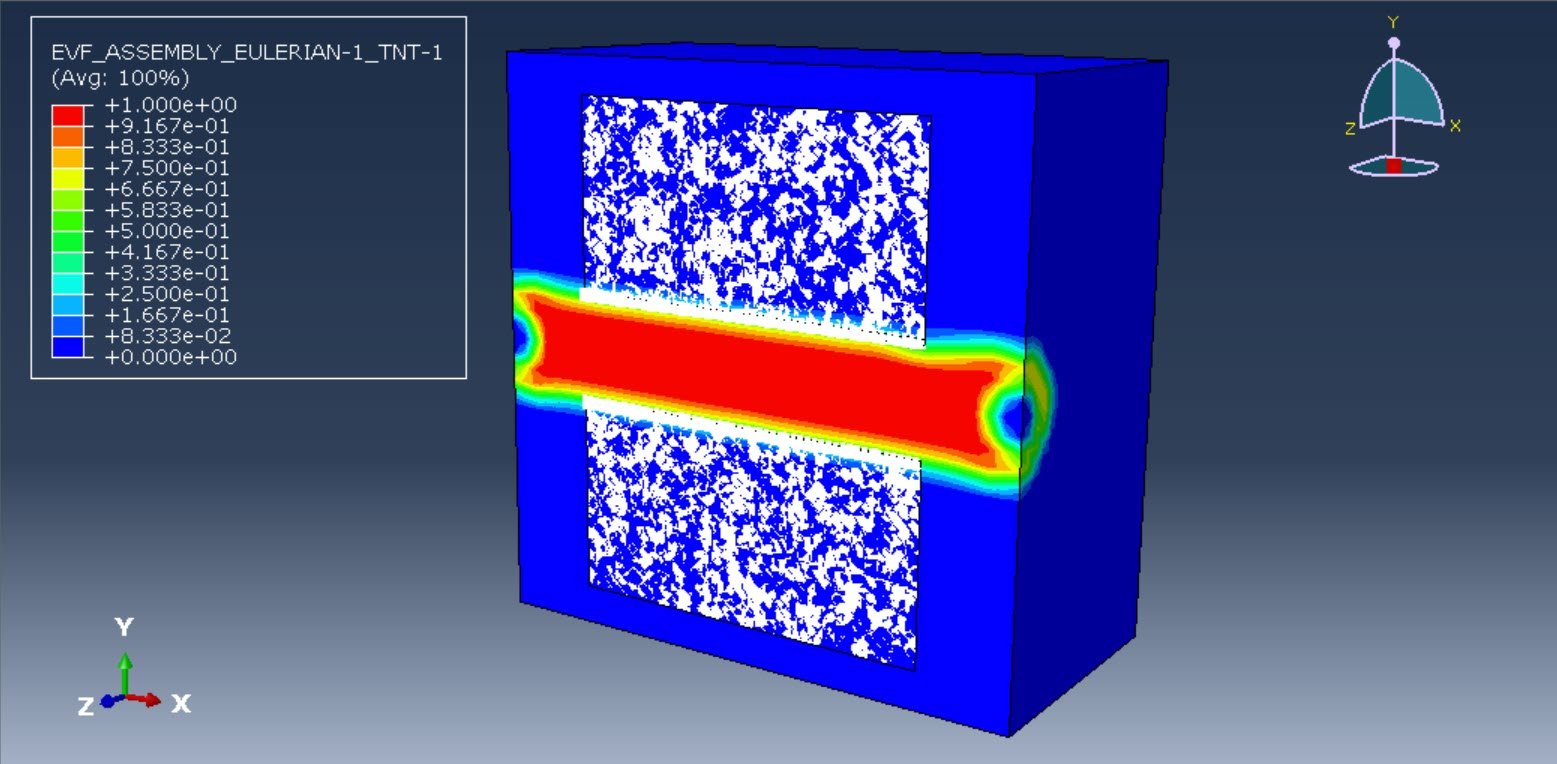Packages & Tutorials
Engineering Files & Tools
Software

Ready-to-use Models (FEA/CFD)

Excel Sheets & Hand Calculations










In recent years, the threat of internal explosions within critical underground infrastructure, such as transportation tunnels, utility corridors, and military bunkers, has underscored the need for advanced protective measures. Subsurface tunnels, though naturally shielded from surface threats, are particularly vulnerable to internal blasts due to their enclosed geometry and confined environment. The resulting overpressure from an internal detonation can induce significant structural damage, endanger lives, and disrupt essential services.
To address this vulnerability, the incorporation of high-performance composite materials in tunnel linings has emerged as a promising solution. Among these materials, Glass Fiber Reinforced Polymer (GFRP) stands out due to its high strength-to-weight ratio, corrosion resistance, ease of installation, and energy-absorbing capabilities. GFRP has been successfully used in retrofitting and reinforcing civil infrastructure, and its application in blast mitigation is gaining attention.
This study focuses on the structural response of subsurface tunnels equipped with GFRP linings under internal blast loading. Through numerical simulations and theoretical analysis, this research aims to assess the influence of GFRP reinforcement on the stress distribution, deformation patterns, and failure mechanisms of tunnel structures subjected to high-intensity internal blasts. The goal is to evaluate the effectiveness of GFRP in enhancing the blast resistance of tunnels and to provide design recommendations for its implementation.
By understanding the dynamic interaction between the blast wave and the tunnel-GFRP system, engineers can develop safer underground spaces that maintain structural integrity under extreme conditions. This research contributes to the broader field of protective engineering and supports the development of resilient infrastructure in the face of modern threats.
This example is so close to the paper here: Non-linear FE investigation of subsurface tunnel with GFRP protection against internal blast


Dynamic
€1,00 €0,00
See more

Want to receive push notifications for all major on-site activities?